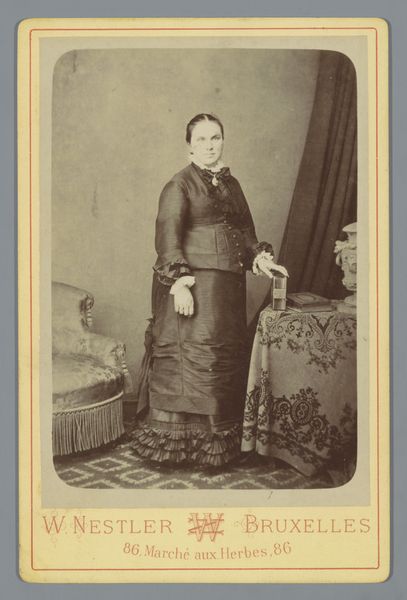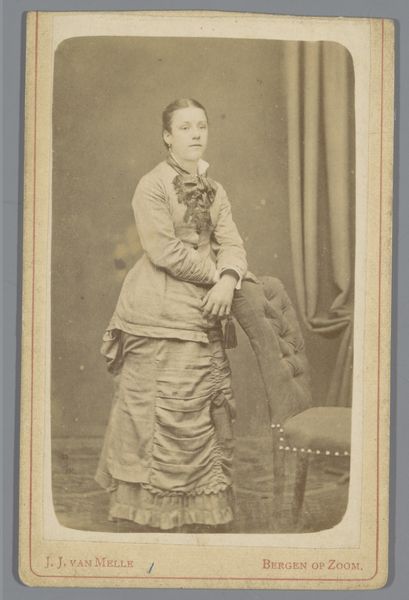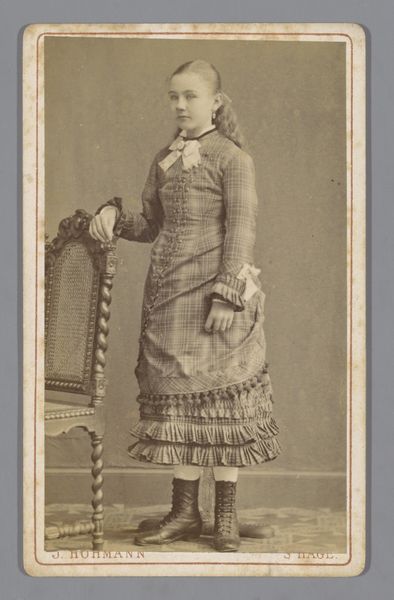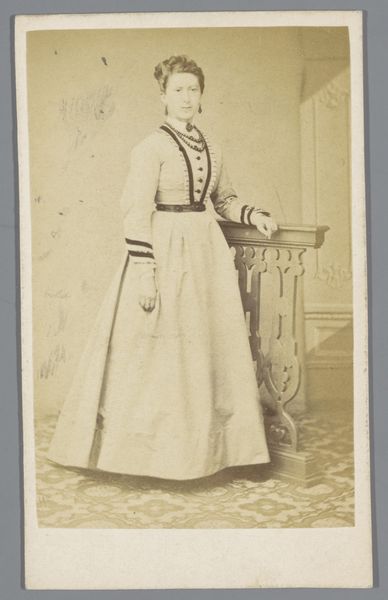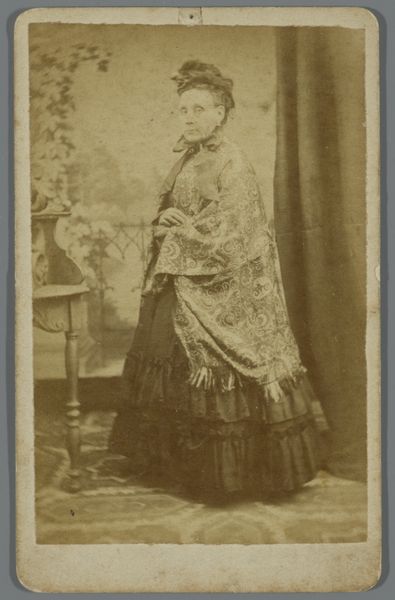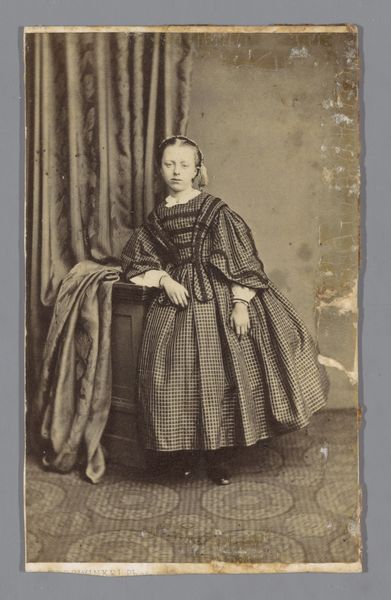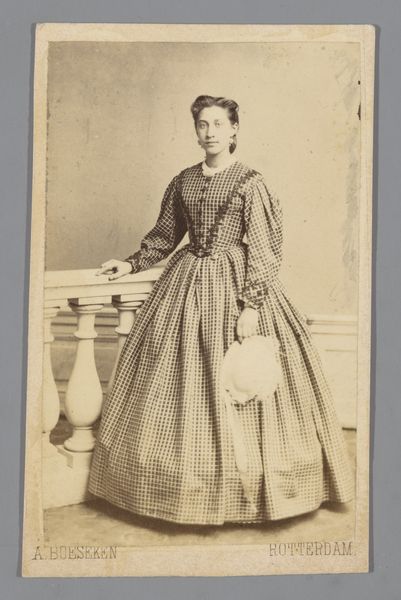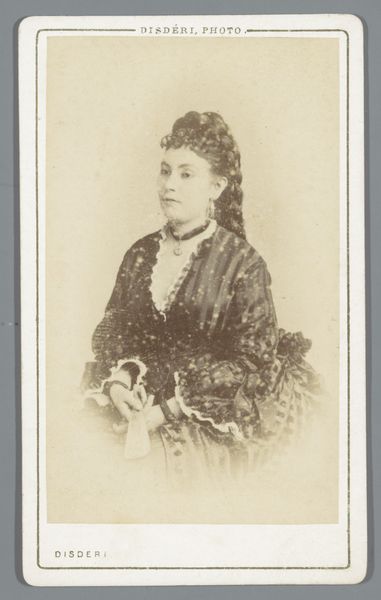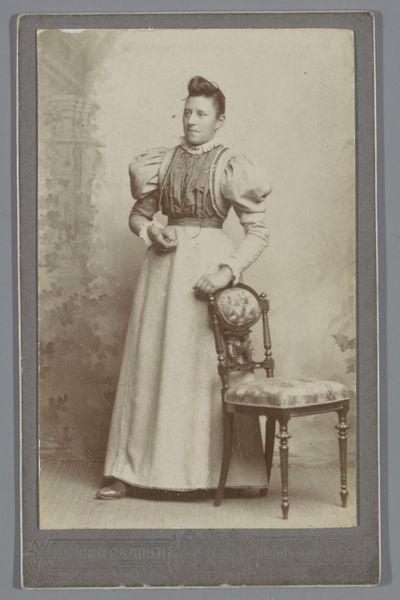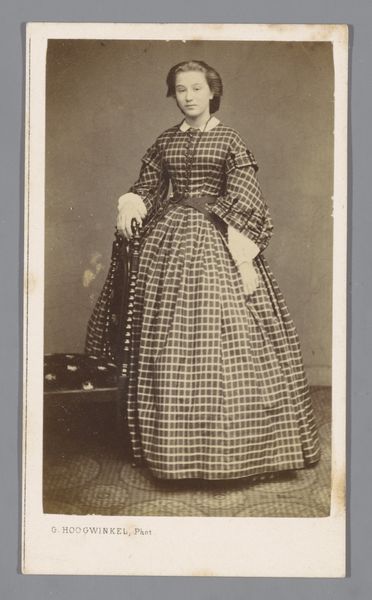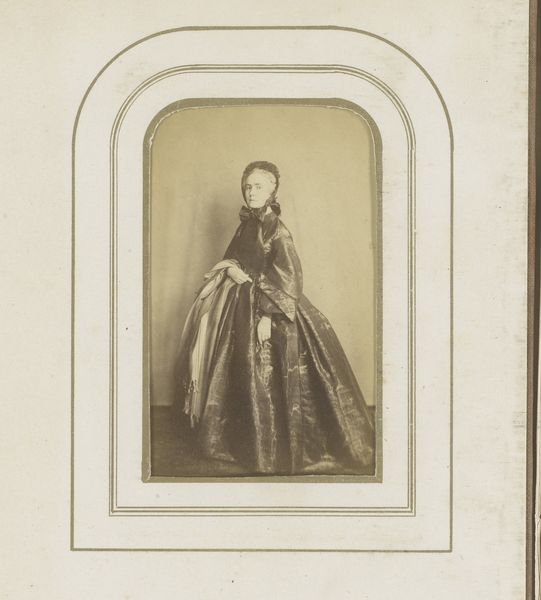
photography
#
portrait
#
photography
Dimensions: height 105 mm, width 63 mm
Copyright: Rijks Museum: Open Domain
Curator: Here we have a photograph, “Portret van een onbekende vrouw bij een fauteuil”, which translates to “Portrait of an unknown woman by an armchair”. It was created by Henry Jones sometime between 1871 and 1876. Editor: The sepia tone lends such an air of seriousness! Her plaid dress and the tufted armchair give an overall impression of middle-class domesticity. It's a composed, rather reserved scene, don’t you think? Curator: I think the setting does try to tell us a bit about the woman's position. These photographs, carte-de-visite as they were often called, were increasingly common. They became a way for the burgeoning middle class to assert themselves, their status, in the rapidly industrializing world. But notice the “unknown woman” aspect here is interesting too, as is H. Jones place, Adelaide. How might ideas around the self and individuality differ? How is photography being deployed to confirm ideas or perceptions? Editor: Exactly. And while it’s staged and conventional, that doesn't mean we can't consider the woman’s own experience. Look at the way she holds the small book or the lack of engagement in her eyes, that makes me question what her hopes and dreams may have been in such a limiting time. Perhaps the staging acts to repress, not reveal. Curator: Or is it to conceal to reveal something more accurate, given this controlled medium. We cannot overlook that her positioning might have to do more with presenting a curated sense of self in the service of courting or business for instance, particularly during that specific era. The dress that she wears with its repetitive plaid might be more about sending the proper and calculated message to the person examining the picture than reflecting the subject as a whole. It represents codes in and of itself that only period audiences would understand and take notice of. Editor: Those little details! All things to consider about who could have commissioned it, for whom, and what the meaning was in both 1876, and now. Thanks for sharing your expertise. Curator: Likewise. It always proves enriching to explore those kinds of questions from these images.
Comments
No comments
Be the first to comment and join the conversation on the ultimate creative platform.

